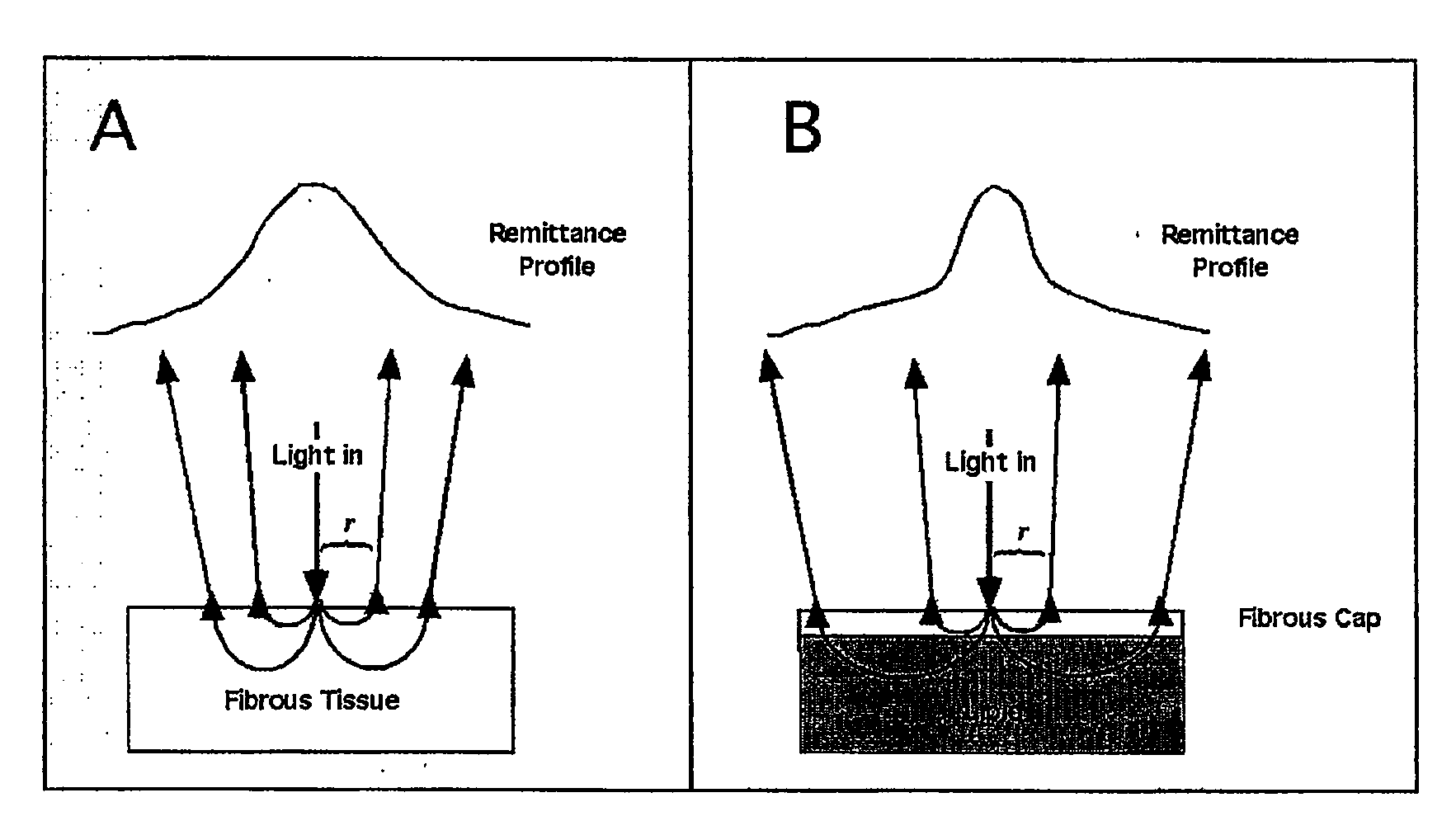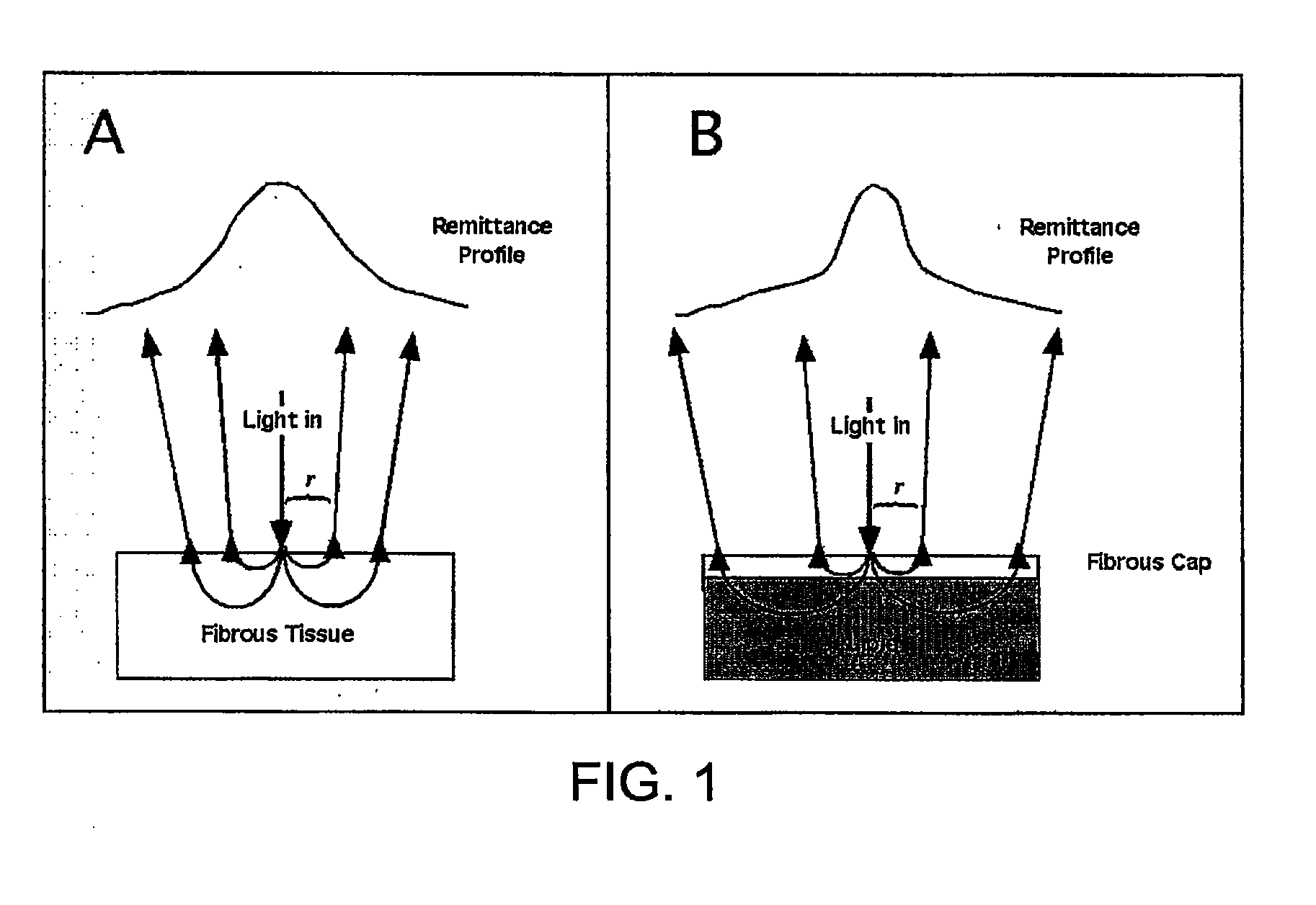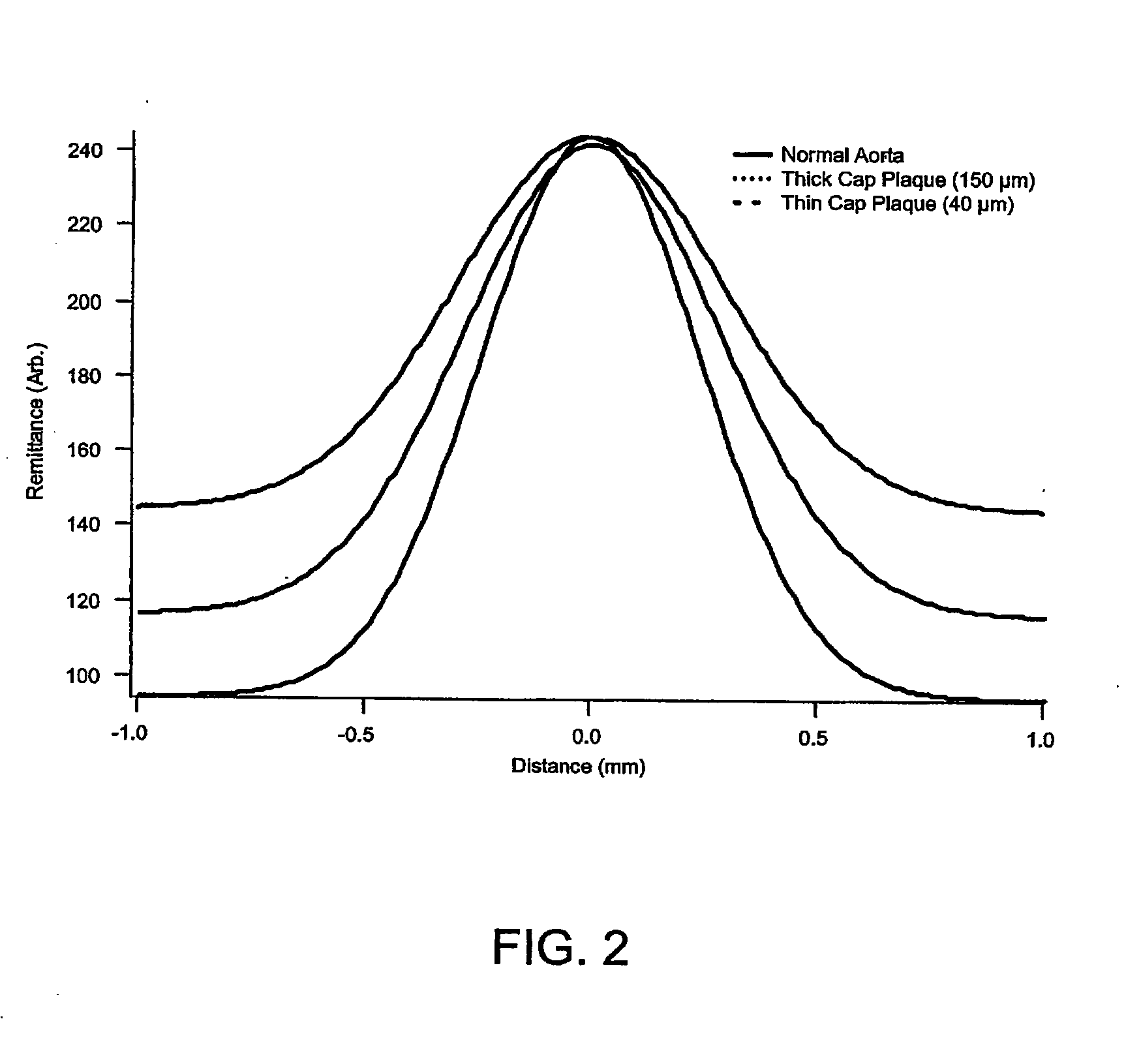Method and apparatus for determination of atherosclerotic plaque type by measurement of tissue optical properties
a technology of tissue optical properties and atherosclerosis, which is applied in the field of characterization of atherosclerosis plaques by tissue optical properties, can solve the problems of sudden death, rough surface at risk, myocardial infarction, etc., and achieve the effect of measuring tissue optical properties
- Summary
- Abstract
- Description
- Claims
- Application Information
AI Technical Summary
Benefits of technology
Problems solved by technology
Method used
Image
Examples
example 1
[0098]This example was a project to explore the potential of OCT for identifying macrophages in fibrous caps of atherosclerotic plaques.
Specimens
[0099]264 grossly atherosclerotic arterial segments (165 aortas, 99 carotid bulbs) were obtained from 59 patients (32 male and 27 female, mean age 74.2±13.4 years) at autopsy and examined. 71 of these patients had a medical history of symptomatic cardiovascular disease (27.1%). The harvested arteries were stored immediately in phosphate buffered saline at 4 C.°. The time between death and OCT imaging did not exceed 72 hours.
OCT Imaging Studies
[0100]The OCT system used in this Example has been previously described. OCT images were acquired at 4 frames per second (500 angular pixels×250 radial pixels), displayed with an inverse gray-scale lookup table, and digitally archived. The optical source used in this experiment had a center wavelength of 1310 nm and a bandwidth of 70 nm, providing an axial resolution of approximately 10 μm in tissue. T...
PUM
 Login to View More
Login to View More Abstract
Description
Claims
Application Information
 Login to View More
Login to View More - R&D
- Intellectual Property
- Life Sciences
- Materials
- Tech Scout
- Unparalleled Data Quality
- Higher Quality Content
- 60% Fewer Hallucinations
Browse by: Latest US Patents, China's latest patents, Technical Efficacy Thesaurus, Application Domain, Technology Topic, Popular Technical Reports.
© 2025 PatSnap. All rights reserved.Legal|Privacy policy|Modern Slavery Act Transparency Statement|Sitemap|About US| Contact US: help@patsnap.com



